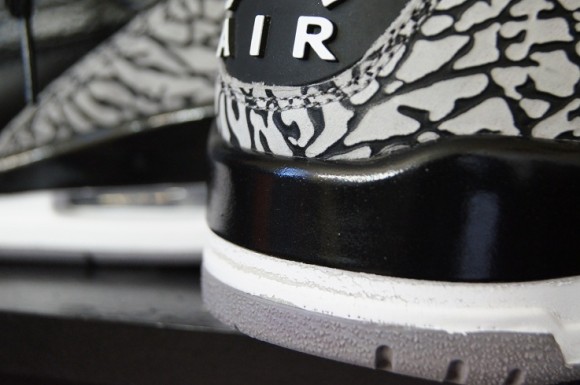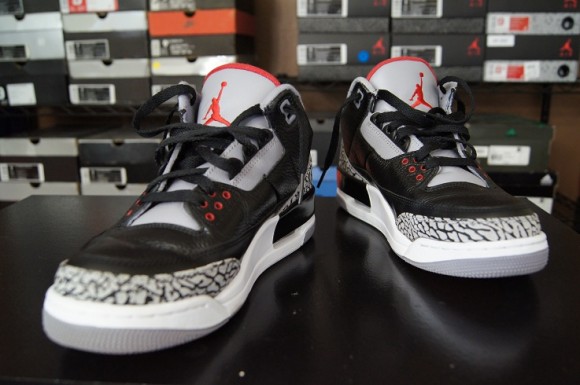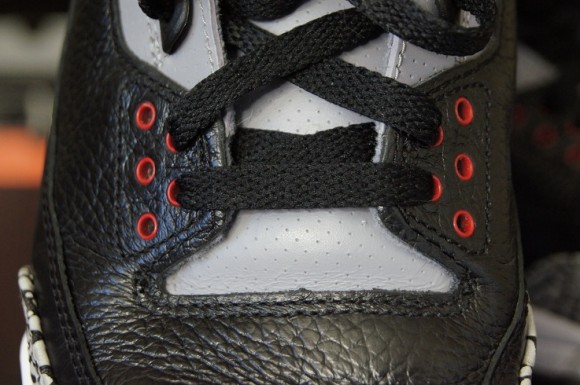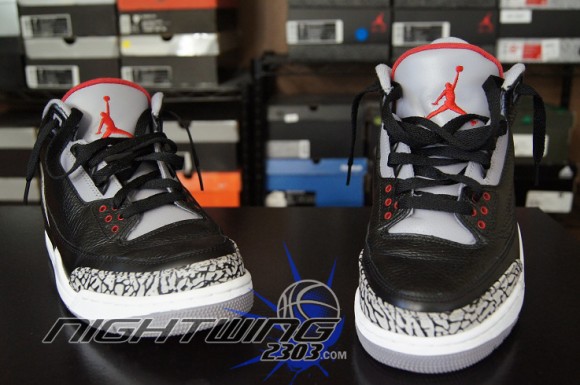Everyone who likes sneakers knows this one, and even Skateboarders who aren't into Nike SB have at least heard of it or maybe seen it in the Nike SB movie "<a href="https://www.solesnk.com/items/nike-dunk-low-what-the-super-mario-andrew-chiou-custom/">What the Super Mario</a>" . The characteristical toebox has been copied many times by every skateshoe brand out there. Since day one, it has been the flagship of the whole SB line.
This is a review of the Nike Sb Dunk low from a skateboarder’s view.
To start at the beginning: If you decide to get some <a href="https://www.solesnk.com/product-category/dunk-sb-dunk/">Dunks</a> for skating be sure to get the right size. The recomendation is to buy them true to size. The shoe will stretch after several wears, especially the suede models, but also the leather ones, because the cusion in the heel will lose its original dimentions when put under pressure. If you buy them half a size too big, the cababillity of the shoe to hold your foot tightly in the right position will be lost, which might leed to ankle twists or other such injurys.
The break-in time that the Dunk takes is almost non existing, especially the suede models,
which are ready out of the box.The full leather ones might take a bit longer to break in, but after a few walk in them before you start skating them they are fine as well. If the still feel a little stiff, just bend the sole in all possible directions a few times to increase the flexibility.<img class="alignnone wp-image-123408 " src="https://www.sneakernovel.com/wp-content/uploads/2023/07/dunk.jpg" alt="" width="416" height="236" />
<strong>Durability:</strong>
<p style="text-align: left;">The durability of a shoe is largely affected by the way it's built in the key areas. More layers of strong and
resistant material will last longer than fewer layers of weaker material, such as canvas. The Dunk has a 4-layer toebox. From the outside there is a layer of suede/leather, a layer or durable
rubber/plastic, a second layer of suede or leather and finally a layer of the inner material, normally some kind of woven canvas.</p>
<p style="text-align: left;">The Dunk is really durable compared with shoes by other companys in the same category. How long a pair will last will depend on how often they are skated in and the tricks people do, but they hold up very well for their construction and the boardfeel they provide.</p>
Some other shoe models have soles that wear out faster than the upper. The sole gets holes in them, the
grip wears away, while the upper remains intact.
This is not the case with the Dunk. The sole of the Dunks is durable but still provides a great contact with
the board. The design of the sole is roughly structured and the grooves are deep, so it takes longer to become slick. Although there's no optional physical lace protection or hidden lace loops, the laces last longer than most compareable models because of the high cut of the inside and outside panels of the Dunk. This means the laces need to be tied relatively tightly, which provides some protection for the laces.
Before the introduction of the <a href="https://www.solesnk.com/items/313170-661/">SB line,</a> the Dunk had been improved for skateboarding from the original basketball model with the Pro B range. However, there are some weak areas that, although they don’t effect the over-all performance, do cause the shoe to look worn out faster.
The first weak spot is the toebox, which is secured with double stitching.. Since the layers of the toebox area aren't glued together, the shoe will start to fall apart once the stiching (that admittedly do hold up pretty well) are worn through.
The swoosh isn't glued on either, or is just single stiched, the same thing will happening to it. This is especially the case when doing a lot of heelflips or general tricks that involve the back part of the shoe.
Another weakness is caused by the inner lining of the Dunk, which bends slightly to the outsides of the shoe, and the mesh tongue. Both sections rip quickly when in contact with griptape.
Although these weak spots, and the swoosh problem, don't affect the performance of the shoe, they make it appear kind of ugly after only a few wears. A much more substencial problem is the unglued toebox, which could be easily fixed by Nike in the future. Until then, it can be reduced by putting a thin line of super glue on the toebox stiching, which will add protection to the stitcing.
<strong>Breathability:</strong>
Breathability is an often-underrated element of skateshoes, especially since the revival of minimalistic vulcanised shoes that classicaly lack materials that allow airflow out of the shoe. But whoever has skated on a hot summers day for several hours knows the feeling of "cooking feet" that breathable shoes can reduce.
Since most Dunks, with a few exceptions , don't use mesh on their uppers, the breathability is completely dependent on the few holes in the toebox and the tongue. And since the tongue is stuffed, the airflow here is reduced. As a result, the breathability of the shoe isn't too good. The part of your feet that is covered by the tongue especially gets critically hot in the summer, up to the point where it's a
pleasure to take the shoes off.
<strong>Boardfeeling/Shape/stickyness:</strong>
The boardfeeling and stickyness of the sole used on the Dunk is extremely good for ashoe with a cupsole.You could even go so far as to say that there are vulcanised shoes out there that provide less boardfeeling and stickyness.
Although my goal is to write an as objective review as possible, i'm very picky when it comes to soles. I can't stand slippery soles at all, and was very pessimistic about the Dunk in the beginning. However, it satisfied my high expectations completely.The good boardfeeling has its roots in the low design of the midsole and the fact that there's simply not much material between sole and the inner part of the shoe. The 5 mm zoom air airbag supports this whole concept. On one hand, it protects your heels against heel bruises, on the other, it keeps your foot as close to the board as possible. I wouldn't recommend skating a 12 stair with Dunks though, because the shoe isn't specifically designed for it. Another important feature is the shape of the toebox, since that's the part of the shoe that you "work" with the most, from doing an ollie to complex flip tricks. The toebox of the Dunk combines the best from two different shapes, it's in the middle between an arrow shaped toebox (think Lakai Manchester) and a round toebox, like the Lakai mj-3 or the Adidas Campus. Because of this combined shape, most skaters feel comfortable with it, perhaps even when they normally would prefer a clear arrow/round shaped toebox.
If you compare the overall impression of the Dunk compared with shoes of other brands they have a rather tight and narrow shape. If you lace them really loose they get a "fatter" shape, but several skate shoes of other brands are still way bigger and more stuffed.
The described cut is especially an advantage for skaters with narrow feet that normally "get lost" in shoes by other companies. Dunks still fit quite close to your foot if you like your skateshoes laced loose. If a narrow shape is important for you, you should, in general, pretty much choose between either Lakai, Vans or <a href="http://www.ajnovel.com/">Nike SB</a>.
Comfort/Support:
The Dunk feels comfortable on your feet. The stuffing is concentrated in key areas, which means only the heel has thick stuffing. The middle and front don't have stuffing materials except for in the tongue.
On one hand, this composition is supportive for the overall boardfeeling of the shoe, on the
other, your feet will get hurt easier. A main disadvantage of the Dunk is the lack of support
in the heel area. This area generally consists of more than just leather and suede layerssewed together.
In many skateshoes you'll find an additional support element, which is made out of either plastic or a special cardboard. The bigger and stronger this element is,the more support the whole shoe will provide, preventing twisted and bruised ankles. This element in the dunk is neither big nor very strong, you can test it by simply squeezing the heel., If you compare different shoes and brands you'll find that the Dunk is pretty weak in this area. You can diminish this weakness by lacing them tight and up until the last whole, but it will be a higher risk for your feet compared with stiffer shoes.
Improvements:
Althought it seemed that Nike SB wants to keep the original shape and feel of the Dunk, there are some minor improvements that would improve the overall performance without changing the shape.
The toebox area could have hidden stiching, like Nike already do with the Harbor shoe.
This means the toebox doesn't need to be glued on but the durability would be much better. This is also the case for the swoosh, which falls off far too easily.
The tongue straps could be bigger and maybe placed a bit higher up the tongue to stop it bending in an almost horizontal way if you just lace the first 5 holes, which most people do.
This would also add some support.
Finally, there should be more leather or suede tongues instead of mesh. The mesh looks ugly after a few sessions because it gets destroyed so quickly. The mesh doesn't even provide much breathability anyway. So a perforated leather/suede tongue would be more durable and allow just as much airflow as the already-existing mesh tongue.
Another solution might be a top part of the tongue made from leather, while the rest of the tongue that's hidden under the laces stays mesh.
“One sentence summary”:
The Dunk low is a basic and universal shape that most skateboarders will like. Except for the breathability and the heel support the Dunk is a great skate shoe that is grippy, has a balanced amount of board feel and is quite durable.
Thanks to Tim Weissberg who had a look at the grammar and spelling
















